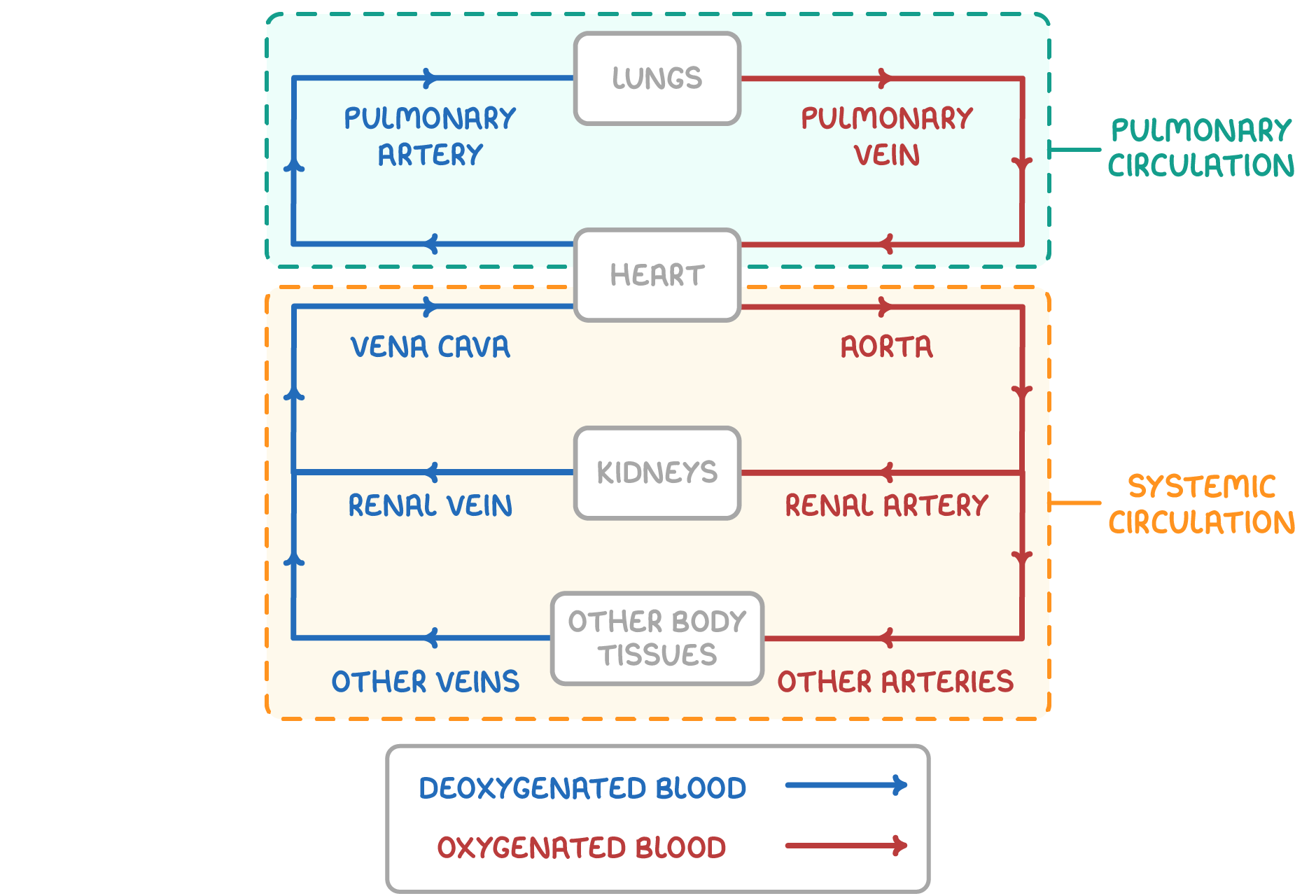Overview of the Circulatory System
This lesson covers:
- Why multicellular organisms need transport systems
- The structure of the mammalian circulatory system
Why do multicellular organisms need transport systems?
Multicellular organisms need internal transport systems like the circulatory system.
This is because, compared to single-celled organisms:
- Multicellular organisms are larger, so the diffusion distance across their surface would be too large.
- Multicellular organisms have a higher metabolic rate.
- Multicellular organisms need to supply nutrients and oxygen rapidly to a larger number of active cells.
So overall, diffusion alone would be too slow.
Mammalian circulatory system structure
Mammals have a closed, double circulatory system.
This means that:
- It is a closed system - Blood is contained in blood vessels.
- It is a double system - Blood passes through heart twice per circuit.
The two main divisions of the mammalian circulatory system are the systemic system and the pulmonary system.

Systemic circulatory system:
- Oxygenated blood is pumped out of the heart via the aorta to most body tissues.
- Other blood vessels branch from the aorta to deliver blood to body tissues (e.g. the renal artery delivers blood to the kidneys).
- Veins collect deoxygenated blood from these organs (e.g. the renal vein collects deoxygenated blood from the kidneys).
- Deoxygenated blood is returned to the heart via the vena cava.
Pulmonary circulatory system:
- Deoxygenated blood is pumped out of the heart via the pulmonary artery to the lungs.
- Oxygenated blood is returned to the heart via the pulmonary vein from the lungs.